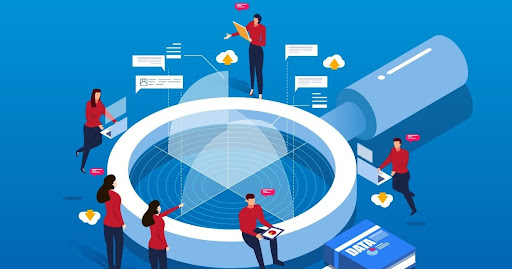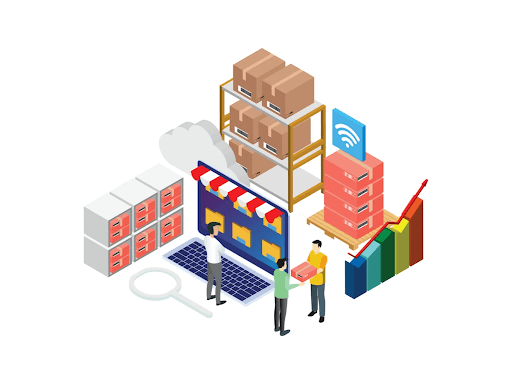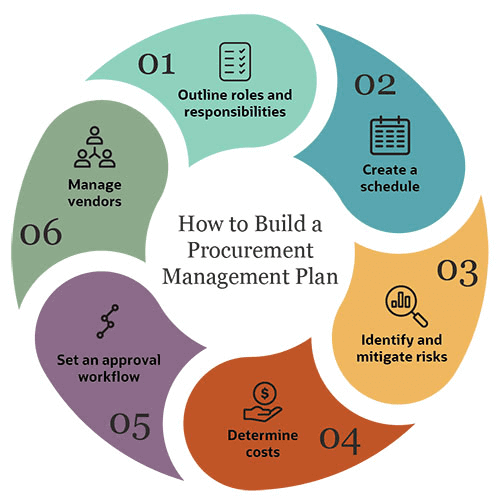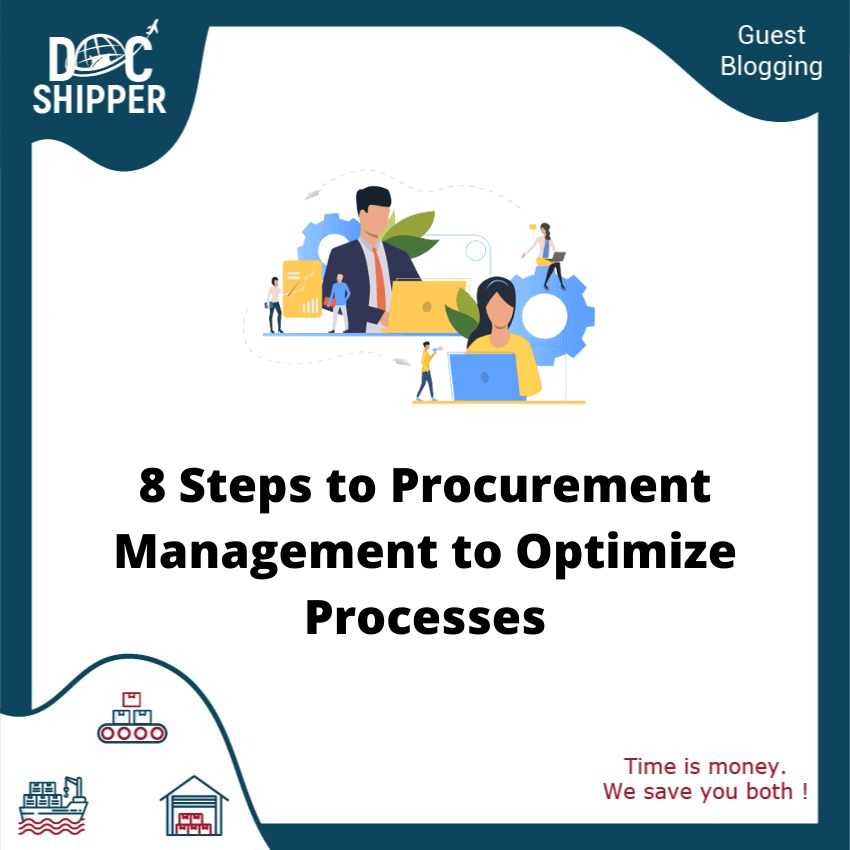Table of Contents
The COVID-19 pandemic has taught the business world about the importance of having an efficient procurement management system in place. There is a long list of reasons why this process needs to be optimized but it all boils down to one simple fact: it saves the business time and money.
Unfortunately, procurement project management is not as simple as checking out ValueHunta for the latest and greatest deal. Having a procurement analyst means effectively getting the materials needed to keep your company’s production process moving along smoothly.
What is Procurement Management?
Before we can worry about things like the procurement supply chain, a procurement department, or a procurement specialist, helps to know what it is in the first place. Simply put, it is the process in which an organization works with vendors to get the materials and supplies required for business purposes.

The process also entails establishing relationships with vendors and suppliers. From time to time, it can mean attempting to reduce costs through discounts or relationships with the vendor or supplier. Though the needs can vary from company to company, the procurement process is largely the same no matter where you go.
Benefits of procurement management:
- Reduce cycle time for procurement processes;
- Increase the quality of goods and services provided by suppliers to avoid wasting money on things that don't work, don't last, or simply do not meet expectations;
- Ensure timely delivery of products and services without delays because this causes dissatisfaction among customers which leads to a loss in revenue opportunities.
7 Steps to Procurement Management to Optimize Processes
There are distinct steps to the procurement management process that can help to optimize the entire endeavor. One of the most important things for any business is proper time management. Time is money, as they say, and wasted time equates to money wasted.
By following these steps, a business’s procurement management process can go from chaotic to smooth in no time at all. This means staying up to date on material needs and ensuring that there are no delays or issues in the production process. More money coming in and less time being wasted on ineffective processes.
1. Supply Needs Recognition
Whether you have a procurement analyst or delegate the role to someone else, it comes down to the need for supply.
The need for recognition is a fundamental step in the process because it determines if there is going to be an actual need for procurement. Three main areas must be recognized:
- Internal – what can we produce or do internally?
- External – what outside resources, products, and services will we need from suppliers?
- Inventory – how much material, supplies, finished product do we have on hand?
After the initial recognition of supply needs is completed then it can be determined if there is an actual need for procurement. It is important to consider all three areas because this will help determine what kind of planning must take place before beginning any processes.
A supply chain analyst will take a look at the consolidated supply and determine where needs are and how to meet them. This is the expense recognition principle. Without it, organizations find themselves taken by surprise when supplies run out. What happens next is a delay or stoppage in the production process, which can have a major impact on the earnings of that company.

2. Purchase Requisition and Review of Request
Requisitions are an imperative part of the process. It is important to know all about the purchase requisition form, especially a purchase requisition vs purchase order. There will be a requisition number created which allows for tracking of the process from start to finish.
A requisition is then recreated to start the purchase request. With planning and foresight, these requisitions can be placed well in advance to prevent any lulls in the production process. This means staying on target for tight deadlines and ensuring that there is never a down period for production.
3. Negotiate Contracts with Suppliers
Of course, part of the process involves ensuring that these supplies remain cost-effective. Whether it be distributive negotiation, integrative negotiation, principled negotiation, or contract negotiation, a negotiation strategy should be in place.
If there is no strategy, it can lead to either overpaying for certain materials or going without them entirely. While budgets are important, going without those materials can cause major production issues. By having a strategy in place, procurement analysts can compare potential vendors and find those with not only the best prices but the best level of service to meet the demands of the organization.

DocShipper Info : Interested in our services? Need personalized information? Contact us, our experts will answer you within 24 hours
4. Solicitation Process
The solicitation may not necessarily fall in line with the procurement methods of every organization. The process is about finding procurement partners and giving all potentially interested vendors an opportunity to compete. This is done through a letter of agreement. A non-solicitation agreement, meanwhile, dictates that the organization is not interested in procurement through that vendor.
The idea is to not only welcome competition, but to help the business get the best price for procurement needs. By bringing competition into the fold, there is the chance that prices could lower, which would ultimately benefit the soliciting organization at the end of the day.

5. Concluding a Procurement Contract
When a vendor has been chosen, a contract negotiation begins. A contract may have contract defenses built within to protect each side of the agreement. Negotiating contracts takes an experienced professional who recognizes the details of the contract and ensures that both parties are fairly represented.
Negotiating a contract is not something that should be handled by anyone. Moreover, a bad contract can keep an organization committed to materials that are overpriced or of lesser quality for longer than is wanted. Having a professional review the procurement contract and ensure that everything is right is highly recommended here.
6. Order Management
After the contract has been put into place, it is on to the order processing part of the management process. Having order management in sales force is important for maintaining a sense of organization within the entire procurement process.
When an order is placed, there is a shipping order created. The order is fulfilled, shipped, and tracked starting at the vendor and ultimately arriving at the business. It is an effective way to know what materials are incoming so as to prevent issues with over ordering, missing orders, and any other potential problems in the supply chain. In short, it ensures efficiency and order in this portion of procurement management.

DocShipper tip : In case you need assistance during your expedition contact a team of professionals who will help you manage your project's workflow
7. Payment for a Contract Invoice
The procure to payment process is the one that gets the most attention and rightfully so. Without a payment management system, businesses are asking for potential chaos. It is a simple yet effective way of properly managing incoming payments, outstanding invoices, and so much more.
An open payment can be tracked to show which invoices still need to be paid. Disorganization, particularly with a contract invoice, can lead to falling behind and becoming late on that invoice. That can potentially carry costly penalties with it, which ultimately costs the organization more money than it should have otherwise.
8. Audit and Delivery Order
Having an order management system is an absolute must for procurement. You can find a delivery order template out there if you don’t know where to begin. But having an order selector is of the utmost importance.
You can sort by the first order, ascending order, or any other way that works for you. This is the easiest way to keep track of open orders, closed orders, and booked orders. Moreover, it makes record-keeping a breeze because you can call up purchase orders and delivery slips whenever they are needed.
Any time you can streamline not only order processes but file management processes as well, you should. It makes for a more efficient, organized organization. One that makes far fewer basic, costly mistakes on a regular basis.
How to Optimize Your Procurement Management Process?
Managing the process becomes a task within itself. It starts by having a procurement supply chain and even a procurement specialist working solely on the procurement process. They will work directly with the vendors while keeping tabs on the materials required to keep production moving.
The key is to make sure that communication is constant and that there is an effective management system in place. Otherwise, it can lead to inconsistencies within the process. Inconsistencies equate to wasted time, wasted time equals wasted money. That is why having an effective system in place is so imperative.
Best practices manage procurement to optimize processes includes:
- Priority of transparency
Prioritizing transparency is key to creating a successful procurement management plan. Process transparency creates the trust that is essential for any future relationship between companies and suppliers.
The best way to increase transparency is through documentation. This means it is necessary to create a public and centralized document of all processes, decisions, and agreements with suppliers. It helps to avoid any misunderstandings and ensure a fair relationship.
- Automate procurement process
More than 70% of organizations are still using paper-based processes to manage their procurement process. Mistakes (which happen very often) can cost the loss of hundreds of thousands or even millions of dollars.
That is why it's important to introduce automation in your processes, especially when you process large volumes and/or involve a lot of suppliers. It reduces mistakes by up to 50% and makes management faster because there are no data entry errors. The best way is to automate the whole supply chain from procurement to payment.
- Minimizing risks
There are three main areas of risk that need to be minimized in the process:
1. The risk associated with fraud and corruption
This includes all actions which are designed or can lead to illegal behavior, such as theft, bribery, etc. The best way is to implement a very rigid anti-corruption program (to prevent any future penalties)
2. Risks related to management practices
This includes risks to an organization's ability to run its business. For example, the company may be at risk of losing market share or facing a crisis due to delays in product delivery. The solve this issue, it is important to consider a supplier's financial stability and legal compliance with the company.
3. Risks associated with third parties
This includes any damage that can be caused by another party acting on your behalf (for example, an agent) or as a result of you engaging with a third party. For example, you can face financial risks due to product quality or quantity issues if your supplier does not meet the minimum requirements of your company.
The best way is to set strict criteria for suppliers and conduct regular evaluations with them. These processes will minimize the risk associated with third parties significantly as well as help companies make smarter decisions when choosing suppliers.

FAQ | 7 Steps to Procurement Management to Optimize Processes
Procurement vs Purchasing: What is the Difference?
The biggest question you may have is what is the difference between purchasing vs procurement? Well, procurement sourcing is more strategic. It isn’t just about buying supplies and materials. It is about working with vendors to find the best prices, planning ahead to accommodate demand (or a lack thereof), and working to avoid delays in production. A purchasing manager, meanwhile, is simply in charge of the actual purchasing. They place the orders with the vendors to have the necessary materials brought in. Purchasing is certainly an important part of it but it is one part of a greater process. Procurement is necessary for controlling the material needs of the entire organization, whereas purchasing is one act within that process.
What is Procurement Management Plan Benefits?
There are more than a few benefits to be had with procurement project management. First and foremost, procurement planning helps to prevent interruptions in the production process. When the production process moves unimpeded, it means less time wasted and less money lost due to production lulls. Working with procurement partners can also have its benefits. Depending on the relationship, there is the possibility that it could result in major savings. Developing these relationships means working closely with someone. The more closely you work with a vendor, the more inclined they are to want to give you a better rate. All of which can make a huge impact on the bottom line.
Why is the Procurement Management Process Necessary?
Sustainable procurement may seem like it can be avoided. You may think that skipping out on property management or a procurement manager can save money towards the bottom line. But in reality, going without is likely to cost the organization money, not save it money. Having a procurement management system in place is imperative for streamlining a process that is all too easy to screw up. When there is not enough material on hand to accommodate, then there are production delays. Too much material and goes wasted, taking the money spent on those materials along with it. It is a delicate balancing act.
How to Control Risks in Procurement?
Another aspect of procurement is risk management solutions. There are modifiable risk factors involved that can change based on a number of conditions. A risk monitor keeps an eye on these factors, looking for changes that may make it more or less likely to come true. The risk monitor is an integral part to the procurement process. Without a proper risk management system in place, there will come unpleasant surprises that the company is not ready to tackle. Risk management is not necessarily about preventing issues from arising but how to react when they do come up.
What is the Difference Between Direct and Indirect Procurement Services?
There are also a few differences in services within procurement. You will come upon direct procurement in most cases, but what is the difference between direct and indirect procurement? Knowing the difference can help you find the right fit for your organization. Directly relates to products and raw materials that the company uses to make their products, sell them and retail them. Indirect meanwhile, are the materials needed to run the company. It can be marketing costs, travel expenses, and more. When talking about the procurement process, we are generally referring to direct procurement services as it relates to producing and manufacturing goods of some sort.
Conclusion
Though there are bound to be inefficiencies and minor errors due to human involvement, a procurement management system is meant to keep those to a minimum. The system doesn’t quite run itself but it isn’t far away from that, either.
Having the right system in place can mean a lot of good things for a business. It means ensuring having all the necessary materials on hand to keep production rolling. It means potentially getting discounts through ongoing relationships with vendors. And it means automating some of the more menial tasks and making them more efficient than ever before.
DocShipper info: Do you like our article today? For your business interest, you may like the following useful articles :
- Coronavirus (Covid-19) impacts on import/export business
- How does Coronavirus impact international supply chain?
- 💡How to find a good product to sell?
- How to find your reliable supplier for your business? [Fair Trade Guide]
- AliExpress | Use the Chinese panacea to sell your products online
- How a sourcing strategy can rocket your margin?
DocShipper Advise : We help you with the entire sourcing process so don't hesitate to contact us if you have any questions!
- Having trouble finding the appropriate product? Enjoy our sourcing services, we directly find the right suppliers for you!
- You don't trust your supplier? Ask our experts to do quality control to guarantee the condition of your goods!
- Do you need help with the logistics? Our international freight department supports you with door to door services!
- You don't want to handle distribution? Our 3PL department will handle the storage, order fulfillment, and last-mile delivery!
DocShipper | Procurement - Quality control - Logistics
Alibaba, Dhgate, made-in-china... Many know of websites to get supplies in Asia, but how many have come across a scam ?! It is very risky to pay an Asian supplier halfway around the world based only on promises! DocShipper offers you complete procurement services integrating logistics needs: purchasing, quality control, customization, licensing, transport...
Communication is important, which is why we strive to discuss in the most suitable way for you!






